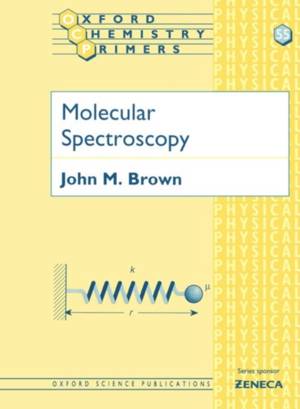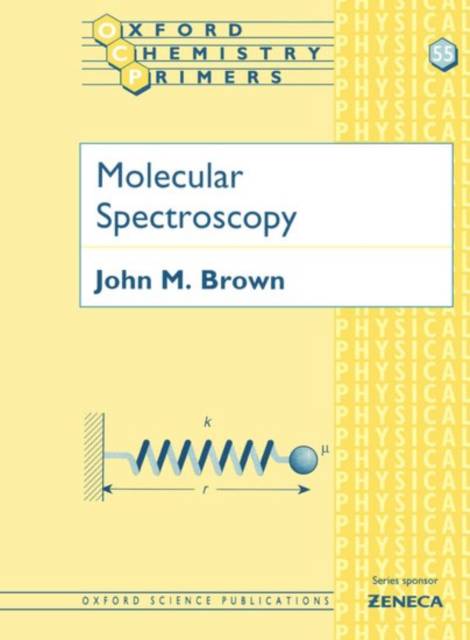
- Afhalen na 1 uur in een winkel met voorraad
- Gratis thuislevering in België vanaf € 30
- Ruim aanbod met 7 miljoen producten
- Afhalen na 1 uur in een winkel met voorraad
- Gratis thuislevering in België vanaf € 30
- Ruim aanbod met 7 miljoen producten
Zoeken
€ 40,95
+ 81 punten
Omschrijving
This book provides a straightforward introduction to the spectroscopy of diatomic molecules and is written at the level of intermediate undergraduate courses in physical chemistry and chemical physics. Following a general introduction to the subject, the second chapter lays out the essential quantum mechanical tools required to understand spectroscopy. Very little previous knowledge is assumed; mathematics is kept to a minimum, the treatment being only semi-quantitative. The following chapter uses this quantum mechanical framework to establish the selection rules which govern spectroscopic transitions. Chapters 4 - 7 describe the various branches of spectroscopy covered by the book; rotational, rotational - vibrational, Raman, and electronic spectroscopy. Quantum mechanics is used to derive formulae for the various energy levels involved and for the relative intensities of different types of transition. From these, the appearances of the different types of spectra are derived.
The molecular parameters on which these spectra depend are defined and the structural information which can be derived from these is discussed.
The molecular parameters on which these spectra depend are defined and the structural information which can be derived from these is discussed.
Specificaties
Betrokkenen
- Auteur(s):
- Uitgeverij:
Inhoud
- Aantal bladzijden:
- 96
- Taal:
- Engels
- Reeks:
- Reeksnummer:
- nr. 55
Eigenschappen
- Productcode (EAN):
- 9780198557852
- Verschijningsdatum:
- 12/11/1998
- Uitvoering:
- Paperback
- Formaat:
- Trade paperback (VS)
- Afmetingen:
- 241 mm x 185 mm
- Gewicht:
- 221 g

Alleen bij Standaard Boekhandel
+ 81 punten op je klantenkaart van Standaard Boekhandel
Beoordelingen
We publiceren alleen reviews die voldoen aan de voorwaarden voor reviews. Bekijk onze voorwaarden voor reviews.











